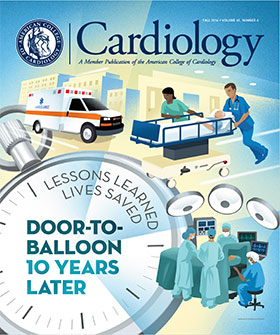Looking Ahead: What's in Store For the New Medicare Payment System in 2017
The Medicare Access and CHIP Reauthorization Act of 2015 (MACRA) repealed the broken Sustainable Growth Rate formula and ushered in a new Medicare payment system, the Quality Payment Program (QPP), that rewards clinicians for the value of care delivered versus the volume of services. MACRA also streamlines the current Medicare quality reporting programs: the Physician Quality Reporting System (PQRS), the Value Modifier and the Electronic Health Record (EHR) Incentive Program into a single program. Regardless of whether a clinician participates in the Merit-Based Incentive Payment System (MIPS) or an Advanced Alternative Payment Model (APM), the two pathways under the QPP, clinicians will be measured on four core components: quality, meaningful use of certified EHRs, clinical practice improvement activities (CPIA) and resource use.
The Centers for Medicare and Medicaid Services (CMS) on Oct. 14 released the final rule for the QPP that solidifies policies for MIPS and Advanced APM participation starting with the 2017 performance year (2019 payment year).
Through its advocacy efforts, the College has worked with CMS and other health care organizations since day one to help shape the new Medicare payment system and ensure cardiovascular professionals can succeed in the new program. It is clear that CMS listened to the ACC and other health care stakeholders as key recommendations were included in the final rule to provide increased flexibility in year one of the program. Program flexibility highlights include:
- The “Pick Your Pace” program will allow clinicians and groups to avoid a penalty under the MIPS program by simply reporting at least one measure. Clinicians and groups that strive to report data across all MIPS categories for at least 90 days, or ideally, the full 2017 calendar year, will be eligible for bonuses.
- By increasing the low-volume dollar threshold from $10,000 to $30,000, CMS estimates 32 percent of clinicians will be exempt from QPP requirements in the first year of the program.
- $100 million for technical assistance through contracts with regional organizations will be available to small practices of 15 or fewer MIPS eligible clinicians, rural areas, health professional shortage areas and Indian Health Services clinics, with priority given to rural areas, medically underserved areas and practices with low MIPS scores.
Additionally, the Advancing Care Information (ACI) category of MIPS (formerly the EHR Incentive Program) requirements have been reduced from 11 required measures to five measures for full credit. CMS has also reduced the number of CPIAs that clinicians need to participate in to receive full credit in that category. CMS has lowered the scoring weight for the Resource Use (cost) MIPS category to 0 percent for the first year of the program, recognizing that many of the procedure- and condition-based episode groups used to measure performance in this category have not yet been tested for use at the clinician level. As a result, the 2017 performance year MIPS weight for the Quality category will be increased to 60 percent. As for Advanced APMs, this pathway is being expanded to include more clinicians by recognizing more APMs as Advanced, including simplifying the definition of the financial risk that an APM must assume in order to qualify.
|
Clinical Topics: Cardiac Surgery, Cardiovascular Care Team, Invasive Cardiovascular Angiography and Intervention, Valvular Heart Disease, Cardiac Surgery and VHD, Interventions and Structural Heart Disease
Keywords: ACC Publications, Cardiology Magazine, American Heart Association, Benchmarking, Cardiovascular Diseases, Centers for Medicare and Medicaid Services, U.S., Certification, Coronary Artery Bypass, Diabetes Mellitus, Electronic Health Records, Heart Valve Diseases, Meaningful Use, Medicaid, Medically Underserved Area, Medicare Part B, Mitral Valve, Motivation, Nurse Clinicians, Outcome Assessment, Health Care, Patient Care, Patient Safety, Physician Assistants, Physicians, Public Health, Quality Improvement, Registries, Risk Factors, Medicare Access and CHIP Reauthorization Act of 2015
< Back to Listings

